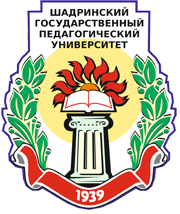Изучение темпо-ритмической организации речи у дошкольников с дизартрией
Study of the tempo-rhythmic organization of speech in preschool children with dysarthria
Аннотация
Количество детей с нарушениями речи увеличивается. При этом страдает не только речевое развитие, но и в темпы формирования просодических компонентов речи.
Авторы акцентируют внимание на изучении темпо-ритмической организации речи у детей дошкольного возраста с дизартрией. Целью статьи является исследование темпо-ритмической организации речи у дошкольников.
Для достижения поставленной цели была адаптирована методика, включающая обследование шести основных элементов темпо-ритмической организации речи (восприятие ритма, воспроизведение ритма, определение темпа речи, восприятие темпа речи, воспроизведение отражённого темпа речи и самостоятельное управление темпом речи).
Теоретическая новизна. Проведён количественный и качественный анализ особенностей развития темпо-ритмической стороны речи у дошкольников 6-7 лет с дизартрией. Выделены особенности сформированности темпо-ритмических компонентов у дошкольников с дизартрией. Условно выделены уровни развития темпо-ритмической организации речи и их качественная характеристика.
Практическая значимость. Разработана адаптированная методика диагностики темпо-ритмической организации речи у дошкольников.
Abstract: The number of children with speech disorders is increasing. At the same time, not only speech development suffers, but also the rate of formation of prosodic components of speech.
The authors focus on the study of the tempo-rhythmic organization of speech in preschool children with dysarthria. The purpose of the article is to study the tempo-rhythmic organization of speech in preschool children.
To achieve this goal, a methodology was adapted, which included an examination of six basic elements of the tempo-rhythmic organization of speech (perception of rhythm, rhythm reproduction, determination of the speech pace, perception of the speech pace, reproduction of the reflected speech pace and independent control of the speech pace).
The theoretical novelty. Conducting in quantitative and qualitative aspects of the analysis of the development of the tempo of the rhythmic side of speech to preschoolers 6-7 years old with dysarthria. The features of the formation of tempo-rhythmic components in preschool children with dysarthria are highlighted. Conditionally allocated levels of development of the tempo-rhythmic organization of speech and their qualitative characteristics.
Practical significance. An adapted method for diagnosing the tempo-rhythmic organization of speech in preschool children has been developed.






